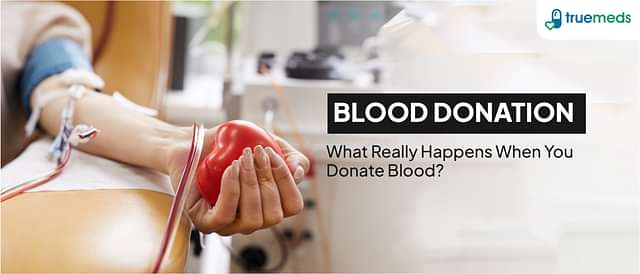Pain on the Right Side of the Abdomen: Understanding the Causes and Treatment Options
Last updated on : 18 Mar, 2025
Read time : 10 min
Abdominal pain is a common symptom that can arise from various conditions affecting the organs within the abdomen. The pain can vary in location and intensity and can be accompanied by other symptoms. When you experience pain on the right side of your stomach, it falls under the category of right-side abdominal pain. This discomfort may indicate issues with organs such as the liver, gallbladder, appendix, or right kidney.
Now that we understand what pain on the right side of the abdomen may entail, let’s delve deeper into what causes it.
What are the Causes of Right-Side Abdominal Pain?
Pain on the right side of the abdomen may be caused by any of the following things.
1) Excess gas
Excess gas can lead to considerable discomfort and cramping in the right side of your stomach. This condition often arises after meals and can be exacerbated by certain foods that are difficult to digest. Symptoms may include bloating, increased burping, and a feeling of fullness.
Some things that can provide relief and promote digestion include:
- Simple lifestyle modifications such as dietary changes
- Over-the-counter medications like simethicone can help alleviate gas-related discomfort
- Habits like drinking plenty of water and consuming fibre-rich foods can aid digestion, thus reducing gas production
2) Irritable Bowel Syndrome (IBS)
IBS involves a group of symptoms that occur together. It is a chronic gastrointestinal disorder that can cause abdominal pain, bloating, and changes in bowel habits. These symptoms may occur without any visible signs of damage or disease in your digestive tract. Pain may be localised to the right side, particularly during episodes of diarrhoea or constipation.
Some options for managing IBS and its symptoms include:
- Dietary changes such as adopting a low-FODMAP diet. FODMAP stands for fermentable oligosaccharides, disaccharides, monosaccharides, and polyols. These are types of sugars that the small intestine does not absorb properly.
- Medications like antispasmodics (agents that suppress muscle spasms) or laxatives may prove useful.
- Stress management techniques such as cognitive behavioural therapy can also be beneficial in managing symptoms.
3) Gallstones
Gallstones are hard, pebble-like pieces of material that develop in your gallbladder. They can cause sharp, cramp-like pain in the upper right abdomen, often radiating to the back or left side. The pain may occur after eating fatty meals and can be accompanied by nausea or vomiting.
Management of gallstones depends on the associated symptoms
- If gallstones cause inflammation (cholecystitis), surgical removal of the gallbladder may be necessary. This procedure is known as cholecystectomy.
- In cases where gallstones are present but not causing symptoms, regular monitoring may be all that is required.
Read More – Symptoms of Gallstones
4) Appendicitis
Appendicitis, inflammation of the appendix, typically begins with a vague pain around the belly button that migrates to the lower right abdomen. This pain intensifies over time and is often accompanied by fever, nausea, and loss of appetite.
Appendicitis is a medical emergency.
- It usually requires immediate medical attention and surgical intervention, specifically an appendectomy, to remove the inflamed appendix.
- Prompt treatment is essential to prevent complications.
5) Acute Hepatitis
Hepatitis, an inflammation of the liver, can cause pain in the upper right abdomen along with symptoms like jaundice, fatigue, and nausea. The pain may be dull and persistent. Symptoms of acute hepatitis can also include fever, loss of appetite, vomiting, joint pain, dark urine, and light-coloured stools.
Treatment depends on the underlying cause of hepatitis.
- Hepatitis can be caused by a viral infection, alcohol, or an autoimmune disease.
- The focus of treatment is supportive care, including rest, hydration, and avoiding alcohol.
- In the case of viral hepatitis, antiviral medications may be required.
6) Pancreatitis
Pancreatitis or inflammation of the pancreas can lead to severe pain in the upper abdomen, which may radiate to the right side. Symptoms often include nausea, vomiting, and fever.
- Acute pancreatitis can be life-threatening and typically requires hospitalisation for management
- It is managed by intravenous fluids, pain control, and dietary modifications.
- More severe cases might require surgical intervention to address complications.
7) Menstrual Pain
In women, menstrual cramps can cause pain in the lower right abdomen. This pain is often cyclical and can be accompanied by other symptoms like bloating and mood changes.
Menstrual pain can be managed by over-the-counter pain relief medications like ibuprofen or naproxen.
- Hormonal contraceptives can also help regulate menstrual cycles and reduce associated pain.
- Some lifestyle modifications may also be useful in managing menstrual discomfort.
8) Kidney Stones
Kidney stones are hard objects made from chemicals in the urine. They can cause excruciating pain that may start in the lower back and radiate to the lower abdomen and groin. Symptoms can include blood in urine, nausea, frequent urination, severe pain in the lower back, vomiting, fever and chills, or urine that smells bad or looks cloudy.
- Treatment typically includes pain management and hydration to facilitate the passage of the stones. Home Remedies for Gastric Problems
- However, larger stones may require further procedures such as lithotripsy or surgical removal.
Thus, the causes of right-side abdominal pain can range from normal to serious conditions. Understanding the specific characteristics of the pain and accompanying symptoms is crucial for determining the appropriate course of action and treatment. It’s important to remember that these options can vary widely, depending on the underlying cause. Hence, if you experience severe, persistent pain or if your discomfort is accompanied by symptoms that cause you concern, a medical evaluation is essential.
Read More – Home Remedies for Gastric Problems
How is Right-Side Abdominal Pain Diagnosed?
Diagnosing the cause of pain on the right side of the abdomen typically involves a comprehensive, step-by-step approach. It usually begins with a detailed medical history, followed by a thorough physical examination, and various imaging studies and laboratory tests. Each step is critical to effectively identify the underlying causes of right-side abdominal pain. Some of the key measures are outlined below:
Medical History
A comprehensive medical history plays a vital role in diagnosing the cause of right-side abdominal pain. Your doctor will ask you about the nature of the pain and may enquire about when it started, how long it lasts, how severe it is, and whether there are any other symptoms like vomiting, fever, or nausea.
The doctor will also gather information about any previous issues related to your abdomen, any operations you have undergone, and any similar issues in your family. Having this knowledge allows the doctor to narrow down potential causes and provides direction for further examination.
Physical Examination
The next step in diagnosis is a physical examination. During this, your doctor will feel your abdomen to locate any areas of tenderness, swelling, or stiffness. These could be signs of inflammation or irritation in one or more abdominal organs.
The doctor may check for symptoms like fever or jaundice which could provide additional insight into what might be causing your discomfort.
Imaging Studies
To get a better look at what’s happening inside your body, your doctor may order imaging tests. These tests can include:
- An Ultrasound Scan: This is very helpful when investigating possible problems with your gallbladder, kidney stones, or appendicitis. It’s a non-invasive procedure that doesn’t involve radiation.
- A Computed Tomography (CT) Scan: A CT scan can provide detailed images of your abdomen which can help to diagnose conditions like appendicitis, pancreatitis, or tumours.
- X-rays: These can be used to detect blockages, holes, or the presence of gas in the intestines.
Laboratory tests
Laboratory tests can also provide significant insights into what might be causing your abdominal pain. These tests typically include:
- Blood Tests: These can reveal signs of infection (indicated by a high white blood cell count), assess liver function (using liver enzymes), and evaluate kidney function (through creatinine levels).
- Urine Tests: These can help identify conditions like kidney stones or urinary tract infections, which could cause referred pain in your abdomen.
- Stool Tests: If your doctor suspects a problem with your gastrointestinal system, a stool test can be used to detect infections, parasites, or blood.
By gathering information from your medical history, physical examination, imaging studies, and laboratory tests, doctors can accurately diagnose the cause of right-side abdominal pain and develop the most appropriate treatment plan. Diagnosing the cause quickly is crucial, particularly for conditions like appendicitis or gallstones, which may require immediate intervention.
Read More – Symptoms of Hepatomegaly
Key Tips for Managing Abdominal Pain
Here are a few crucial tips for tackling abdominal pain:
- Determine the Severity: If the pain is severe, seek urgent medical attention. For mild, manageable pain, you can first try home remedies or over-the-counter treatments.
- Stay Hydrated: Sip clear fluids like water, broth, or electrolyte-containing sports drinks to ward off dehydration, particularly if you’ve been vomiting
- Manage Stress: Adopt relaxation techniques like meditation, yoga, or deep breathing to cope with stress and anxiety, which can amplify digestive issues.
- Prevent Future Episodes: Consume a well-balanced diet with plenty of fibre from fruits and vegetables, drink plenty of water and regularly wash your hands to avoid viral infections.
Right-side abdominal pain can be owing to several factors. The remedy for this type of pain may vary from lifestyle and dietary modifications to medications and surgical interventions, all of which depend upon the specific diagnosis.
Grasping the nature of the pain and its accompanying symptoms is crucial for its effective management.
Read More – Home Remedies for Stomach Pain
In case you experience persistent or severe pain, seeking immediate medical attention is necessary to ensure suitable treatment. Bear in mind that many causes of right-side abdominal pain are manageable, and with proper care, you can experience relief and return to your regular activities. Remember, there’s always help available when you need it, and your health is paramount.
FAQs
Sharp pain in the lower right abdomen can be due to various reasons, including appendicitis, gallstones, kidney stones, or pancreatitis.
If pain in the right side of the stomach persists for more than a few hours, intensifies, or is accompanied by fever, vomiting, or changes in bowel movements, it might be serious.
The liver, gallbladder, right kidney, and parts of the small and large intestine occupy the right side of the abdomen.
Yes, digestive problems like gas, constipation, and gastroenteritis can certainly cause pain on the right side of the abdomen.
Seek immediate medical attention if the causes of right-side abdominal pain include severe discomfort lasting more than a few hours, fever, vomiting or drastic changes in bowel movements.
Disclaimer
Our healthcare experts have carefully reviewed and compiled the information presented here to ensure accuracy and trustworthiness. It is important to note that this information serves as a general overview of the topic and is for informational purposes only. It is not intended to diagnose, prevent, or cure any health problem. This page does not establish a doctor-patient relationship, nor does it replace the advice or consultation of a registered medical practitioner. We recommend seeking guidance from your registered medical practitioner for any questions or concerns regarding your medical condition.
Popular Articles
Recommended Articles
Recent Articles
Top-Selling Medicines:
...View more
Top-Selling OTC:
...View more
Company
About UsHealth ArticleHealth StoriesDiseases & Health ConditionsAll MedicinesAll BrandsNeed HelpFAQSubscribe
Registered Office Address
Grievance Officer
Download Truemeds

Contact Us
Our customer representative team is available 7 days a week from 9 am - 9 pm.
v3.7.9
Our Payment Partners























































